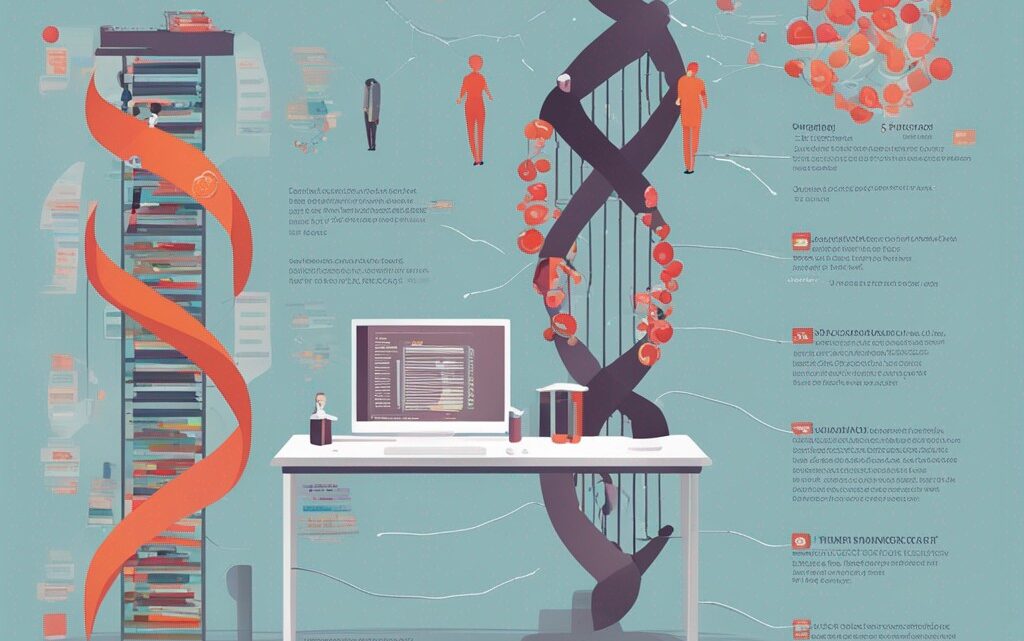
Genomics to Notebook (g2nb) Revolutionizes Bioinformatics Analysis Through JupyterLab Integration
September 10, 2023g2nb & JupyterLab: Revolutionizing Bioinformatics Analysis
Introduction
In a landmark development for the field of bioinformatics and data science, researchers have released Genomics to Notebook (g2nb). This is a groundbreaking environment that unites the much-favored JupyterLab notebook system with top-of-the-line bioinformatics platforms such as Galaxy and GenePattern. Moreover, g2nb integrates JavaScript versions of IGV and Cytoscape for enhanced visualizations.
The Need for g2nb
Electronic notebooks have quickly become the standard medium for data science and bioinformatics research, thanks to their accessibility and ability to produce reproducible “research narratives”. While platforms like Jupyter Notebook and JupyterLab lead the way, integrating existing bioinformatics analysis platforms with notebooks has been challenging. Installation, compatibility, and resource requirements often prove to be stumbling blocks. That’s where g2nb comes in, offering a hassle-free and all-inclusive notebook-based system.
What g2nb Offers
Seamless Analysis Workflow
In a standard Jupyter notebook, a user typically deals with cells that can either contain text or executable code. g2nb innovates by introducing a new cell type that interacts with remote Galaxy or GenePattern servers. This enables users to conduct their entire analysis workflow within the notebook interface, rendering it straightforward and efficient.
Advanced Visualizations
Visualizing complex genomics data is often a necessity in bioinformatics. g2nb goes above and beyond to include JavaScript versions of renowned visualization tools like Cytoscape and IGV, in addition to standard heatmaps, dendrograms, and other plots. All of these can run within the JupyterLab environment, enhancing the user experience substantially.

Enhanced JupyterLab Features
g2nb augments JupyterLab with additional functionalities like presenting Galaxy histories and GenePattern result files within notebook cells, running end-to-end workflows, and automatically handling data transfers between remote servers and the notebook. The inclusion of the Globus file transfer protocol ensures that users can move files of any size effortlessly.
User Interface Builder
For those who author notebooks, g2nb provides a User Interface Builder that turns code cells into user-friendly web forms. This allows for more interactive and tailored experiences.
Additional Resources
The g2nb platform is not just revolutionary but also freely available. Users can access an online workspace at [g2nb.org](https://www.g2nb.org), where they can create and run notebooks, share them, and publish them for broader scientific use. A rich library of notebooks, supporting a wide range of bioinformatics modalities, is available for anyone to leverage as templates for their own research projects.
In Summary
The g2nb environment has successfully combined multiple bioinformatics platforms within the JupyterLab interface. It goes beyond traditional code libraries and genuinely enhances the notebook’s features, making it a must-have tool for bioinformaticians and data scientists alike.
Code Availability
For those interested, the g2nb platform is openly accessible. The source code is also available under a BSD-style open-source license on [GitHub](https://github.com/g2nb). Docker containers for local hosting are available at [hub.docker.com](https://hub.docker.com/).
Reference
Reich MM, Tabor T, Liefeld T, Joshi J, Kim F, Thorvaldsdottir H, Blankenberg D, Mesirov JP. Genomics to Notebook (g2nb): extending the electronic notebook to address the challenges of bioinformatics analysis. bioRxiv. 2023:2023-04.

















